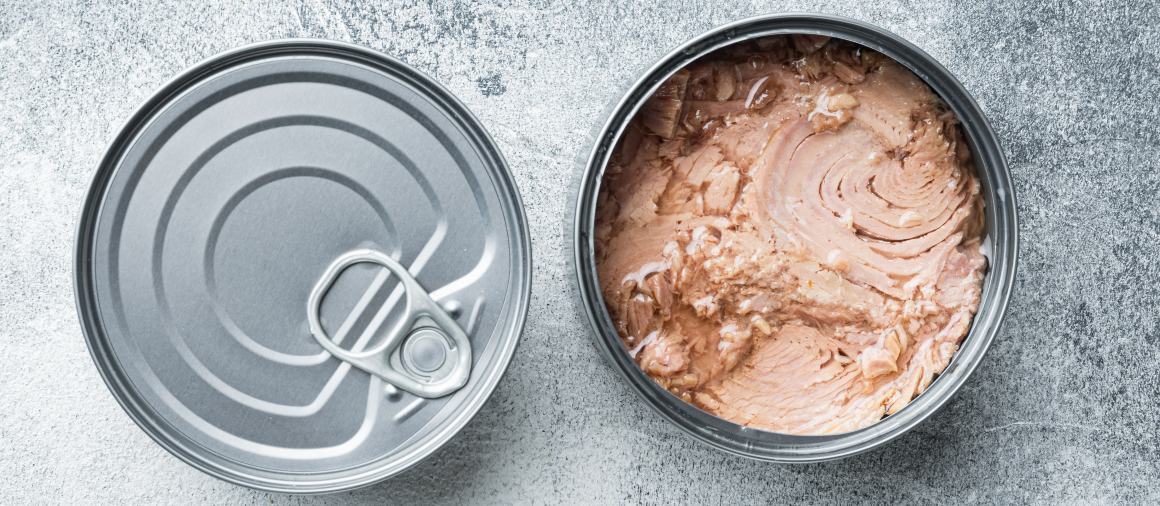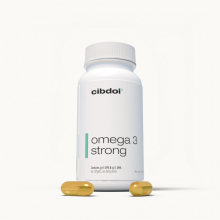Does Canned Tuna Have Omega-3?
Published:
Canned tuna is one of the most popular and affordable fish options, prized for its convenience, versatility and protein content. While fresh tuna provides omega-3 fatty acids, can the canned versions also supply this important nutrient? This article will analyze the omega-3 levels in different types of canned tuna and provide guidance on meeting your daily needs.
Contents:
- Overview of Omega-3 Fatty Acids
- Assessing Omega-3s in Different Types of Canned Tuna
- Why Canned Tuna Retains Omega-3s
- Benefits Canned Tuna Provides
- Increasing Omega-3s in Canned Tuna Recipes
- Top Food Sources of Omega-3s
- Should You Take an Omega-3 Supplement?
- Key Takeaways on Canned Tuna and Omega-3s

Overview of Omega-3 Fatty Acids
Omega-3 fatty acids are polyunsaturated fats that provide wide-ranging health benefits. There are three main types:
- ALA (Alpha-Linolenic Acid) - found in plants and converts in the body to EPA and DHA
- EPA (Eicosapentaenoic Acid) - supports heart health and reduces inflammation
- DHA (Docosahexaenoic Acid) - critical for brain function and development
Experts recommend adults consume at least 250-500 mg daily of EPA and DHA for optimal wellbeing. However, average intakes tend to fall short.
While plant foods provide ALA, the richest sources of anti-inflammatory EPA and DHA are fatty fish like salmon, tuna, sardines and mackerel. Canned tuna can provide EPA and DHA, but heat processing may degrade some omega-3 content.
Assessing Omega-3s in Different Types of Canned Tuna
There are three main types of canned tuna fish:
Skipjack (Chunk Light)
- 238 mg EPA/DHA per 3 ounce serving
Albacore (White)
- 628 mg EPA/DHA per 3 ounce serving
Yellowfin (Gourmet)
- 300 mg EPA/DHA per 3 ounce serving
So albacore tuna provides by far the most omega-3s, followed by yellowfin and skipjack. A 3-ounce serving of albacore delivers 126% of the recommended minimum EPA/DHA, making it an excellent source.
However, some degradation of omega-3s does occur from the canning process. Fresh tuna provides 500-600 mg per 3 ounce serving, slightly higher than canned.
Why Canned Tuna Retains Omega-3s
While some omega-3s are lost in the heat from canning, tuna retains much of its original EPA/DHA content for several reasons:
- Tuna is high in omega-3s to begin with, so losses still leave ample amounts.
- Modern canning techniques use lower heat to better preserve nutrients.
- Canned tuna is pressure-sealed rapidly to limit oxidation.
- Tuna is canned with the skin and dark meat that are highest in omega-3s.
- The oil tuna is canned in helps prevent omega-3 breakdown.
So while minimal losses occur, canned tuna remains one of the richest sources of anti-inflammatory omega-3s.
Benefits Canned Tuna Provides
In addition to omega-3s, canned tuna offers other important nutrients:
- High-Quality Protein - A 3 ounce serving provides 21-25g protein for tissue repair, muscle building and energy.
- Selenium - 60% of the RDI selenium, a potent antioxidant mineral.
- Vitamin D - Provides around 50% of the RDI vitamin D, vital for bone health.
- Vitamin B12 - One can contains over 300% of the RDI vitamin B12 for red blood cell formation.
- Iron - Up to 8% of the RDI iron to prevent anemia and support metabolism.
- Zinc - Assists immune function and DNA synthesis.
Tuna is very nutritious and fits well into a balanced diet. Choosing albacore provides the highest omega-3 impact.
Increasing Omega-3s in Canned Tuna Recipes
Canned tuna is versatile and works well combined with other omega-3-rich ingredients:
- Tuna salad with chopped walnuts (2,500mg ALA)
- Tuna melt with mashed avocado (500mg ALA)
- Tuna salad stuffed tomato with olive oil (75mg ALA)
- Spicy tuna roll with salmon (1,000mg EPA/DHA)
- Tuna casserole with mixed greens (200mg ALA)
- Tuna pasta salad with cannellini beans (150mg ALA)
- Tuna tacos with avo cream (650mg ALA)
Mixing in plant or alternative seafood sources maximizes the omega-3 content of canned tuna dishes.
Top Food Sources of Omega-3s
To meet daily EPA/DHA targets, emphasize these omega-3-rich foods:
ALA Plant Sources:
- Flaxseeds: 6,388 mg per 100 grams
- Chia seeds: 4,915 mg per 100 grams
- Walnuts: 2,574 mg per 100 grams
- Soybeans: 1,241 mg per 100 grams
- Navy beans: 237 mg per 100 grams
- Kidney beans: 406 mg per 100 grams
EPA/DHA Seafood Sources:
- Salmon: 4,123 mg per 100 grams
- Sardines: 2,205 mg per 100 grams
- Anchovies: 951 mg per 100 grams
- Trout: 983 mg per 100 grams
- Atlantic mackerel: 1,699 mg per 100 grams
- Caviar: 1,086 mg per 100 grams
Should You Take an Omega-3 Supplement?
In addition to food sources, a fish, krill, or algal oil supplement can provide concentrated EPA/DHA if your diet falls short. Look for quality brands with purity testing.
Key Takeaways on Canned Tuna and Omega-3s
- Albacore canned tuna provides over 600mg omega-3 EPA/DHA per 3oz serving.
- Some omega-3s are lost from canning but tuna retains most of its original content.
- Mix tuna with omega-3-rich foods like walnuts, avocado and salmon.
- Prioritize fatty fish, flax, chia and walnuts for optimal intake.
- Supplements can help achieve adequate EPA/DHA intake if diet is low in fish.
In conclusion, canned albacore tuna is an excellent source of anti-inflammatory omega-3 fatty acids and provides substantial EPA/DHA, so enjoy it regularly as part of a healthy, balanced diet focused on omega-3-rich foods.















